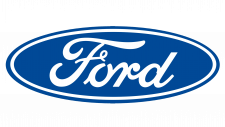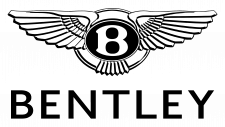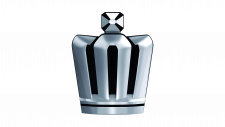Honda Logo
Honda Motor Company, an international industrial company headquartered in Tokyo, manufactures vehicles for a wide audience of buyers. The lineup of the Japanese automaker includes SUVs, business class sedans, and fuel-efficient small cars. Besides cars and motorcycles, it also has lines of lawnmowers, electric generators, and even Android robots. The high reliability of cars and modern technological solutions brought success to this brand.
Meaning and History
The Japanese company originated in 1946 thanks to a daring engineer and racing driver Soichiro Honda. Initially, Honda specialized in motorcycle construction. By the 60s, it had strengthened its standing in the motorcycle market and began introducing new cars to the market. In 1970, this brand actively conquered the North American market, and by 1980, it was the first Japanese company to open its own manufacturing facility in the United States. In 1997, Honda opened its first factory in South America. It expanded the list of cars offered with solar-powered eco-cars in the 1990s.
What is Honda?
Honda Motor Co. is a Japanese concern, one of the largest Asian automakers. The manufacturing sites include more than 30 industrial complexes located in about 20 countries. They provide the company with the opportunity to produce cars for both global and local markets.
1961 – 1969
A stylized letter “H” that stood for the “Honda” served as the first logo. It was done in black with the vertical lines being thinner and wider apart at the top and wider and closer together at the bottom. The joints between the vertical and horizontal lines were curved. The letter was set against white and had a thin black frame that had rounded corners and an isosceles trapezoid shape.
1969 – 1981
The “H” was stretched out a lot vertically, so the trapezoid base was now vertical instead of the horizontal shape of the border the logo had originally. The base was black, while the letter was in contrasting white. A metallic silver version was seen on the actual cars.
1982 – 2000
The new emblem had an “H” that had the two vertical lines drawn almost parallel. The curved corners on the inside were preserves, which drew a link to the original one. There was a black border that had almost a square shape that was slightly narrowed towards the bottom and stretched out horizontally. It also had rounded corners, which looked great with rounded elements of the “H”. The base color was white. Under the emblem, it said “Honda” in large, uppercase letters. The letters were black and had wide serifs.
2000 – 2024
The modifications introduced this time were minimal. The designers made the emblem bigger, which made the “H” inside of it as well as the border look thicker. Otherwise, the wordmark and the emblem looked just like they did for almost twenty years.
2024 – Today
The logo is a stark, minimalist representation of the iconic emblem belonging to the Japanese automaker, Honda. It features a bold, uppercase ‘H’ that stands out sharply against the white background. The design is simplistic yet powerful, with the letter ‘H’ enclosed within a rectangle that has its top side open, giving it the appearance of a gate or bridge. The symmetry of the logo is precise, with equal widths for the vertical lines of the ‘H’ and equal spacing between them, which conveys balance and stability. The thickness of the letter forms suggests strength and reliability, which are qualities often associated with the brand. The logo’s clean lines and absence of additional embellishment reflect Honda’s focus on functionality and its reputation for engineering excellence.
In another interpretation, the logo can be seen as a symbolic gateway, indicating Honda’s commitment to innovation and forward-thinking in the automotive industry. The ‘H’ is designed to be easily recognizable and is often associated with the grille of a car, linking the logo directly to the company’s primary product. The monochromatic color scheme is both modern and timeless, ensuring that the logo is versatile and can be easily adapted to various mediums and backgrounds. This design choice also allows the logo to maintain its visibility and impact whether it is scaled up for a billboard or down for a business card. The open top of the rectangle could also be seen as an open path, reflecting Honda’s openness to new ideas and paths in technology and design.
Lastly, the logo encapsulates the essence of the Honda brand through its stark and unembellished form. It avoids any extraneous details that could detract from the core message it aims to convey: strength, efficiency, and innovation. The use of black and white colors in the logo suggests a clear-cut, straightforward approach to business, much like Honda’s approach to car manufacturing. The boldness of the ‘H’ character itself may be interpreted as a sign of confidence, showcasing Honda’s solid position in the global market and its prominence as a household name in the industry. The open top of the rectangle, while providing aesthetic balance, could also symbolize Honda’s constant progress and its never-ending pursuit of improvement and excellence.
Font and Color
The colors of the logo have been black and white since its foundation. Silver and even red colors are sometimes used by the brand. When it comes to fonts, the letter “H” has undergone minimal modifications. It has rounded corners on the inside. The top is widened, while the lines at the bottom are drawn thicker and closer together. Initially, this made the letter have a trapezoid shape, but over the years, the lines got more straight. There is also a “Honda” written under the emblem. It uses a custom font with wide serifs. The letters are uppercase and about as wide as they are tall.
















